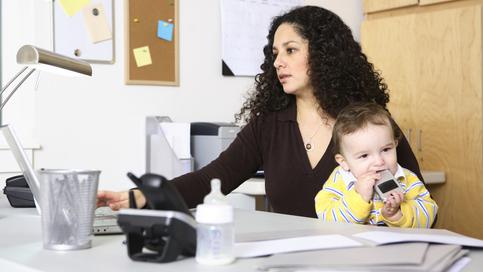What Happened to the Future?

What’s the Big Idea?
The future is a difficult thing to grasp, and not just because we can’t see it. Bringing innovation to life requires imagination, resourcefulness, the sort of limitless creative ambition we today associate mainly with science fiction writers.
It wasn’t always this way. As Alex Knapppoints out at Forbes, Stanley Kubrick and Arthur C. Clarke based their screenplay for 2001: A Space Odyssey on the general scientific consensus of the 1960’s, at which point it was widely expected that computers would be as sophisticated as HAL by the end of the twentieth century.
It’s 2012. The global population of robots has reached one million. The first human-versus-robot chess match took place in 1956, and the first industrial robot was created in 1961. But I still haven’t met a single android.
There’s also no sign of weather control, personal jetpacks, space travel for proles, or mechanical housekeepers — all of which we were promised at one point or another during America’s more optimistic years. Why? Because of a fundamental gap between what we can dream and what we’re willing to fund.
“One of the easiest places to look for new ideas in venture capital is all the technologies of the past 30 or 40 years that have for whatever reason failed to produce a financial return, but for which there is no technological reason why they can’t work,” says Bruce Gibney of Founders Fund. (Founders Fund is invested in SpaceX, a company that designs and builds low-cost rockets.)
Gibney believes that if any of us are to live to see a world in which we can vacation on the moon, eat dinner prepared by machines, and power our homes with clean energy, investors must begin to take risks on long-term investments with less immediate gain. “There are series of what I would call ‘orphan technologies’ that are technologically feasible, but for some reason have been abandoned as unfashionable,” he says.
This is true of artificial intelligence and robotics, which most countries have systematically under-invested in. (Japan, which has demographic constraints that make it appropriate for them to invest in robots, is an exception.) Ditto, space travel. We may think of it as a transcendent human achievement, but not much has actually changed about it since Apollo 11.
There’s even a growing sense among Silicon Valley types that there’s nothing left to do in the consumer Internet. That’s ludicrous, in Gibney’s eyes. The Internet is one of the most transformational methods of information distribution. Surely we haven’t tapped its potential in just two decades of commercialization?
What’s the Significance?
Note that less immediate gain is different than no gain. There’s still money to be made in technology, as long as there’s a proper business model. This issue is particularly relevant to green tech, which Gibney calls “one of the great open questions in venture capital.”
Energy efficiency research has been wildly successful, but what’s lagging is the ability to make green solutions cost-effective. “If I ever encountered a company that was able to produce energy as cheaply as coal produces energy and cleanly then I would be interested in investing in it.” he says.
“The correct thing to do is to say, I will be as good as the market leader and slightly cheaper.” Which begs the question: will we ever be able to build humanoid robots at bargain-basement prices?

Illustration: Mike Vella.
We and our elaborately evolving computers may meet each other halfway. Someday a human being, named perhaps Fred White, may shoot a robot… and to his surprise see it weep and bleed. And the dying robot may shoot back and, to its surprise, see a wisp of gray smoke arise from the electric pump that it supposed was Mr. White’s beating heart. It would be rather a great moment of truth for both of them.” — Philip K. Dick
Cover image courtesy of Shutterstock.com.





